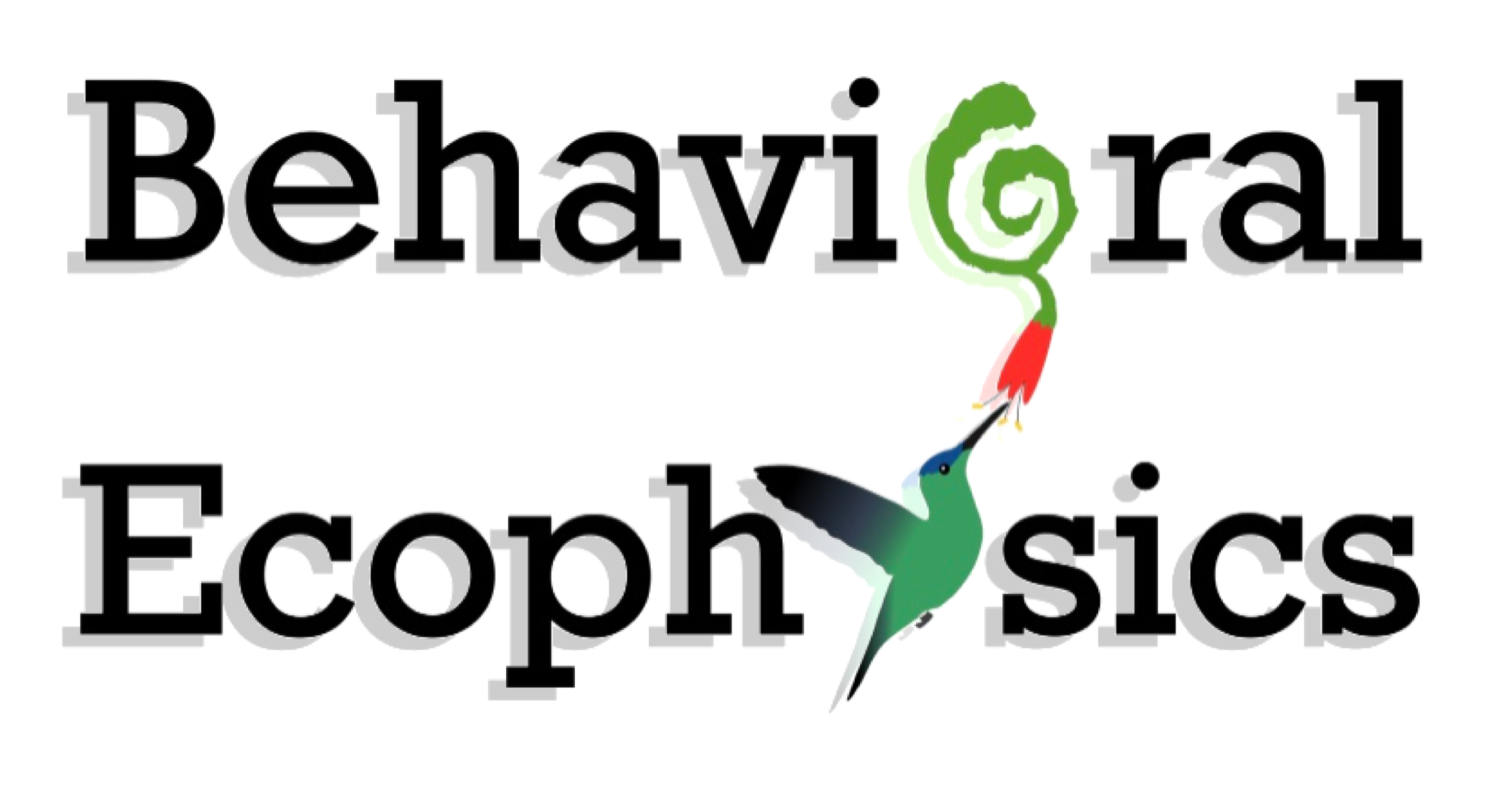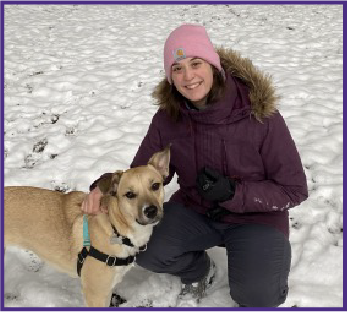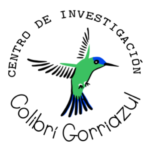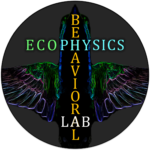Ecophysicists

Alejandro Rico-Guevara
Principal Investigator
Research interests: evolutionary biology, biomechanics, functional morphology/ecology.
My research circumvents the siloing of disciplines that often hinders scientific progress. In our lab at UW Biology and at the Burke Museum—Ornithology—, we combine the study of underlying physics (e.g., fluid dynamics, kinematics, optics, sound) of biological emergent phenomena such as behavior and performance, to explain ecological interactions and evolutionary trends. I focus on textbook examples of coevolution; nectar-feeding animals that pollinate plants. Although I work from a comparative perspective across nectarivores (mostly birds, but also bees and bats), I have concentrated on hummingbirds, a group that pushes biological limits on several fronts: locomotor performance (e.g., unique vertebrate hovering flight and maneuverability), miniaturization (some of the smallest endotherms), physiological adaptations (highest vertebrate mass-specific metabolic rates), phenotypic diversity (e.g., most colorful bird family, bill shape varying twenty-fold range in length and vastly in curvature), and with a spectrum of foraging strategies (interference/exploitative competition).
This focus connects back to how energetically constrained animals have evolved adaptations to enhance caloric intake. Yet, on the other hand, animal competition sometimes turns into physical combat, and particular weaponry evolves. I perform theoretical and empirical research on each of these fronts and study an unexpected case of their intersection: hummingbird bill weapons. My recent discoveries revive questions dating back to Darwin and Wallace about how these birds budget energy gain and expenditure, establishing coevolutionary relationships with flowers. These novel perspectives of a data-rich mutualistic system, open the door to quantitative assessments of trade-offs between energy optimality and fighting proficiency. I translate the insights from this work into testable hypotheses for the ecological and evolutionary interplay between interference and exploitative competition. My research program is question-, rather than technique-driven; thus, I pursue cross-disciplinary approaches aimed to achieve a more complete integration across biological levels of organization.

Madza Farias-Virgens
Postdoctoral Researcher
Research interests: population genomics, brain transcriptomics and evolution of neurobiology.
I specialize in using molecular techniques to delve into the complexities of avian evolution. During my doctoral research, I employed population genomics and brain transcriptomics to uncover the biological processes that drive phenotypic alterations arising from domestication in a songbird model species (Lonchura striata domestica, common name: Bengalese Finch). My ongoing post-doctoral research focuses on utilizing advanced phylogenomic tools to unravel the intriguing phenomenon of nectar feeding evolving independently in multiple occasions within the avian lineage. Concurrently, I am actively engaged in a collaborative effort aimed at studying the distinctive ultrasonic vocal communication observed in a hummingbird species native to the Atlantic Forest known as Black Jacobin (Florisuga fusca). I hold a Bachelor of Science in Biomedical Sciences from State University of Santa Cruz in Brazil, a Master of Science in Genetics and Molecular Biology from Federal University of Rio Grande do Sul in Brazil, a Master of Art in Anthropology from UC Berkeley, and a PhD in Molecular Cellular and Integrative Physiology from UCLA. My graduate research received sponsorship from significant governmental institutions in both Brazil and the US. This included an award from the Coordination for the Improvement of Higher Education Personnel in Brazil and a Doctoral Dissertation Improvement Grant from the National Science Foundation in the US. The outcome of this work was acknowledged as a “Hot Topic in Neuroscience” at the 2019 Annual Meeting of the Society for Neuroscience. Additionally, I was honored with a nomination to the Society for Systematic Biologists Excellence Symposium at Evolution 2021, a prestigious event held jointly by the American Society of Naturalists, the Society for the Study of Evolution, and the Society of Systematic Biologists.

Samuel B. Case
Postdoctar Researcher
Research interests: functional ecology, plant-animal interactions, and novel ecosystems.
Broadly, I am a community ecologist interested in conservation and trait-based approaches to understanding ecosystem change. My passion for science began to flourish in Montana, where I completed my undergraduate studies and devoted my summers to studying breeding bird biology. My ornithology interest then led me to Australia, where I researched the forty-spotted pardalote, a rare and endangered songbird. There I discovered that pardalotes use their pointed bills to create incisions in Eucalyptus leaf stems to “farm” a sugary exudate, which I also found to be the main food item fed to their nestlings. This work inspired a particular fascination for plant-animal interactions, and these days, I’m focused on understanding how species interaction outcomes, such as pollination or seed dispersal effectiveness, can be linked to variation in functional traits. For instance, in the Hawaiian Islands, where I completed my doctoral research, high rates of both extinction and invasion have altered bird communities. Shifts in bird traits like bill shape or body size can scale-up to affect plant community composition through changes to species mutualisms. I used a broad range of methods during my dissertation research, including measuring museum specimens, field experiments, telemetry, and captive feeding trials, all to investigate how species turnover and shifts in functional traits can impact seed dispersal. I also explored how species turnover is impacting pollination processes for a unique plant group, the Hawaiian lobelioids. I am excited to be joining the Behavioral Ecophysics Lab as an NSF Postdoctoral Fellow. Using a trait-based approach, I will thoroughly investigate the impacts of bird extinction and invasion on pollination processes in Hawaiian forests. I also look forward to researching professional barriers to LGBTQIA+ biologists to develop solutions in support of diversity and inclusion in our field.
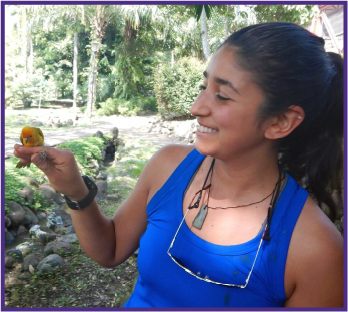
Valentina Alaasam
Postdoctoral Researcher
Researh interest: behavior, physiology, urbanization, evolution
I am an integrative biologist interested in the behavioral, physiological, and eco-evolutionary mechanisms by which animals respond to anthropogenic change. I study this in cities – a ‘natural experiment’ where the speed and magnitude of change is unprecedented and the intersection of multiple stressors (e.g. light, noise and air pollution, heat, habitat loss/fragmentation, invasive species, etc.) is especially potent. I also use cities as a bridge to engage with local communities and leverage what we learn to promote urban designs that nurture both human diversity and biodiversity.
I am currently an NSF postdoctoral fellow studying how hummingbirds are adapting to urbanization. I received my Ph.D. in Ecology, Evolution and Conservation Biology from the University of Nevada, Reno, where my dissertation focused on the effects of light pollution on sleep, circadian rhythms, and stress physiology in zebra finches. Check out my research page for more information.

Madison Mayfield
Research Tech
Research interests: museums & collections, evolution, ecology, science art.
I am also an Assistant Collections Manager of Ornithology at the Burke Museum and am deeply passionate about the important role museum collections play in science. My roles in both the museum and the lab allow me to support the science my colleagues are undertaking and learn about all of their projects along the way! I have worked as a research tech for several years now. From live-trapping sugar gliders in Australia and assessing their population isolation as a result of habitat fragmentation to preparing New Zealand Grey Ducks in the field to see if they have fully hybridized with Mallards, working as a research tech provides endless adventure and opportunity to learn!
GRADUATE STUDENTS

Alyssa Sargent
PhD Candidate
Research interests: behavioral ecology, movement and foraging ecology, advanced wildlife tracking
I am highly interested in leveraging technology to enhance traditional, ornithological field techniques. I have studied a wide variety of birds around the world, from owls in Canada, to seabirds in Portugal, to songbirds in Australia and the United States. This experience has allowed me to understand the ways in which advanced wildlife tracking can strongly complement behavioral ecology around the world. For my PhD, I am focusing on hummingbirds in the tropics, where much of their natural history remainsa mystery, especially their daily movement patterns. Alongside this, I am heavily invested in outreach and communicating my work with the broadest audience I can—I believe that this work is equally important to the scientific research I conduct.

Amanda Hewes
PhD Candidate
Research interests: functional morphology, evolution
My broad interest is in the evolution of form-function relationships. Bird-plant coevolution is a fantastic system for studying this concept, as it requires a reciprocal form-function relationship between the avian nectarivores/pollinators and the plants they feed from. The multiple evolutions of avian nectarivory also provide replicates with which to study the repeatability of these form-function relationships, and understand which forces drive convergence versus divergence across avian pollination systems. For my PhD I will be studying Australian honeyeaters and their functional relationships with plants (feeding efficiency, pollination services) to better understand the structure of that pollination system, and I hope to compare these findings with what is known about the hummingbird pollination systems in the Neotropics. My publications and more details about specific projects can be found on my website.

David Cuban
PhD Candidate
Research interests: biomechanics, evolution, ecology
I am interested in investigating convergent evolution through the lens of biomechanics, morphology, and ecology. I focus on nectar-feeding birds as my study system as there are many avian clades that have independently evolved the ability to feed on nectar. For my PhD I am studying sunbirds, a passerine family that shares many traits with those of hummingbirds while still having notable differences in feeding biomechanics and ecology. I hope to discover the details of sunbird feeding mechanisms and floral interactions/ecology utilizing high speed video, custom remote sensors, and ecological studies.

Yasmeen Erritouni
PhD Candidate (Co-advised, main advisor Adam Leaché)
Research Interests: color evolution, biological pigments, irides- cence, genotype-to-phenotype.
I’m interested in the evolution of avian color, especially iridescence. Iridescent coloration plays crucial signaling roles in a wide range of avian taxa, but remains poorly understood from both evolutionary and genetic perspectives. I aim to understand both what factors drive the evolution of iridescence and what genes could be implicated in its expression.

Andrea Bernal-Rivera
PhD student (Co-advised, main advisor Sharlene Santana)
Research interests: physiology, ecology, evolution, behavior.
I am interested in the integration of various biological disciplines (physiology, ecology, and evolution) in order to comprehend current species diversity and behavior. I focus on bats for answering questions due to their huge ecological, morphological, and anatomical diversity, as well as their unique set of extreme traits among mammals.

Laura L. Quinche
PhD student (Co-advised with Sharlene Santana)
Research interests: functional morphology, ecology, behavioral ecology, evolution.
I am interested in answering questions related to ecological and functional performance. Linking the functional design of organis- ms to performance and resource use is of great importance, as it allows to assess the evolutionary and ecological significance of biological variation. I am particularly interested in adaptive traits and mechanisms related to the feeding process in nectar-feeding bats and hummingbirds, especially those involving plant-animal mutualistic associations.
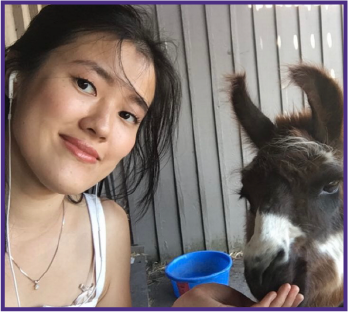
Nora Lee
PhD Student
Research interests: avian coloration, behavioral ecology, evolution, 3D photogrammetry
My main interests revolve around avian coloration—How do birds see colors? What roles do color play in their lives? How did avian coloration evolve over time? I have used multispectral photography and spectrophotometry to quantify museum specimens of hummingbirds, a colorful avian family that presents an excellent opportunity for coloration studies. For my PhD, I plan to investigate the potential roles of color in hummingbird interspecific interactions by incorporating both museum and field studies. Besides that, I'm also interested in and have worked on adapting 3D photogrammetry to field work and on live birds.
RESEARCH STAFF

Kristiina Hurme
Collaborator
Research Interests: behavioral ecology
For my dissertation, I studied maternal care in a neotropical frog, Leptodactylus insularum, in Panama. These large frog mommas often care for schools of 1000s of tadpoles in temporary ponds. I found that they reached metamorphosis surprisingly quickly, growing from egg to juvenile froglet in about two weeks! In order to grow and develop so fast, these tadpoles were constantly active and foraging. This activity attracted a lot of attention from predators, such as fishing spiders and herons, and I found that the only schools that survived to metamorphosis had a mother guarding them. These courageous moms not only fought off predators (even my hand!), but also communicated with the schools, guiding them to safe foraging areas. Some males have large and muscular arms with thumb spines (intrasexually selected weapons), and the only males I observed breeding were huge and covered in battle scars.

Orlando Cómbita
Collaborator
Research Interests: sexual conflict, functional morphology, systematics, symbiotic relationship
I graduated from The Ohio State University in the Evolution, Ecology, and Organismal Biology EEOB Ph.D. program on the renowned Acarology Laboratory at the Museum of Biological Diversity. I used mites as a model to study symbiotic relationships. My research focuses on how mite-host associations are maintained through time, how they can lead to mite speciation, and how symbionts respond to environmental changes. I had based my research on ecologically important mites such as water mites and mites associated with beetles to produce studies in biodiversity, lifecycle, reproduction, coevolution, and sexual selection. I specialized in the use of modern microscopy techniques such as Cryo Scanning Electron Microscopy (Cryo-SEM), Confocal Laser Scan Microscopy (CLSM), Transmission Electron Microscopy (TEM), Synchrotron X-ray microtomography (SR-mCT), and 3D modeling programs to produce quality images and 3D models for explaining evolutionary phenomena through the internal and external morphology of this tiny creatures. I am currently applying this knowledge and techniques to study a fascinating system on mites associated with hummingbirds and the plants that the hummingbirds pollinate.

Ana Melisa Fernandes
Research tech
Research interests: behavior, ecology, and evolution
I am a Venezuelan biologist interested in the study of the behavior, evolution, and ecology of birds. I am primarily focused on the spatiotemporal variation of dominance in hummingbirds and community dynamics along an elevation gradient to comprehend current species diversity. I co-developed and -directed a citizen science initiative to characterize nesting colonies of caciques and oropendolas in Caracas, Venezuela. Currently, I work as a researcher at the Colibrí Gorriazul Research Station in Colombia and as a remote research technician at the BE lab.
